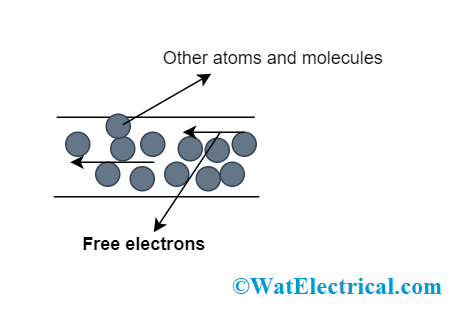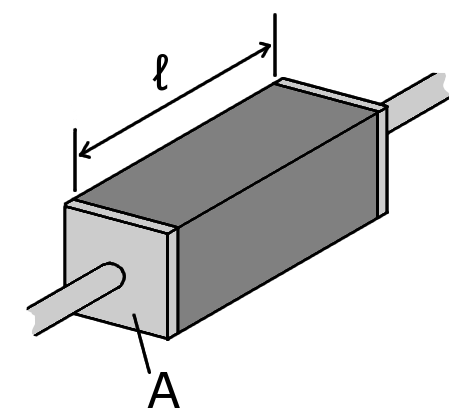In the electrical and electronics industries, the concepts of resistance and resistivity are the most important ones. One has to be clear regarding why these topics hold prominence and what are differences and comparisons? The foremost difference is that resistance opposes the electron flow, while resistivity defines the material’s resistance having the corresponding dimension. So, here is a detailed view of all these topics. This article discusses an overview of the difference between resistance and resistivity.
Difference between Resistance and Resistivity
The main difference between these two mainly includes their definitions and its comparison based on different factors.
What is Resistance?
As per Ohm’s law, we know that V=IR, here R corresponds to the proportionality constant and is termed as Resistance. The exact definition is that it is the opposition of charge flow across a conductor called as electric resistance. Resistance is measured in Ohm (Ω). And it can be stated that resistance is one ohm when the one-ampere value of charge moves through the conductor because of potential variation across its terminals. It is
R = V/I, so that1 1 ohm = 1 volt/1 ampere
Practically, when there is an application of a voltage across the conductor, electrons tend to move in a specific direction. In this movement, the electrons have a breakdown either with molecules or atoms and generate heat. So, these molecules or atoms oppose the electron flow and so represented as
R = ρ (l/a)
Where ‘l’ is conductor length
‘a’ cross-sectional area of conductor and
‘ρ’ is material’s resistivity
The temperature coefficient of resistance can be defined as the slight change in the substance resistance per kelvin and represented as:
α = (Rt – R0)/R0t
where ‘Rt’ is resistance measured at t C0
‘R0’ is resistance measured at 0 C0
‘t’ is temperature change

Resistance Phenomenon
With this, we can know what are the factors affecting resistance and those are:
- Enhancing the conductor length increases the resistance of a wire
- The material of the wire shows an impact on resistance change
- Temperature also has an effect on resistance
- Resistance is inversely related to the cross-sectional area of the conductor
Please refer to this link to know more about Ohms Law MCQs
What is Resistivity?
Resistivity which is also called as specific resistance. It is stated that the resistance of one cubic meter of wire. It is the property that defines the material resistance that the wire is made of. Experimentally, we know that resistance has a direct relationship with the conductor’s length and inverse relation with the wire cross-sectional area. So,
R = ρ (l/a) and ρ = R. (A/L)
With the above equation, when L = 1m, A = 1 sq. meter, then ρ = R.
As per the relation ρ = R, resistivity can be even termed as the resistance of the wire which is of 1-meter length and 1 square-meter of cross-sectional area. Resistivity is measured in ohm-meter and represented as (Ωm). The factors that influence the material’s resistivity is material nature, and temperature and have no dependency on conductor dimensions.
The temperature coefficient of resistivity can be defined as the slight change in the substance resistivity per kelvin and represented as can be represented as:
α = (ρt – ρ0)/ρ0t
where ‘ρt’ is resistivity measured at t C0
‘ρ0’ is resistivity measured at 0 C0
‘t’ is temperature change

Resistivity Phenomenon
Comparison or Difference between Resistance and Resistivity
The comparison between these two are discussed below.
| Factor | Resistance | Resistivity |
| Description | Opposition for electron flow | The physical property of the material having corresponding dimensions |
| Represented symbol | R | ρ |
| Formula | R = ρ(L/A) | ρ = (R*A)/L |
| Measured in | Ohms | Ohm-meter |
| Affecting factors | Temperature, side view area of conductor and length | Material ‘s nature, and temperature and has no dependency on conductor dimensions.
|
| Applications | Used in sensors, heaters and in some fuses | Implemented for quality testing purposes in calcareous soil. |
FAQs
1). What is the relation between resistance and resistivity?
The resistance is represented as a ratio to length and cross-sectional area of the conductor, while the resistivity corresponds to the ratio conductor’s length to the multiplication of the area of resistance of a conductor.
2). Is resistivity directly proportional to resistance?
Yes, Resistivity is directly proportional to the complete resistance of the conductor ‘R’.
3). Which is more fundamental resistance or resistivity?
Resistance holds more fundamental property than that of resistivity.
4). Is resistance per unit length and resistivity the same?
No, Resistivity corresponds to entire material property which is also termed as specific resistance.
5). What are the laws of resistance?
The laws of resistance are:
- R is directly related to conductor length when temperature and other physical aspects are maintained as same.
- R is inversely related to the cross-sectional area of the conductor when the other factors are the same condition.
So, these are the foremost differences between resistance and resistivity. Almost every electrical application is implementing the concepts of resistance and resistivity, one has to be aware of these and also know about what are the resistance and resistivity of some materials such as silver, copper, tungsten, platinum, and many others?